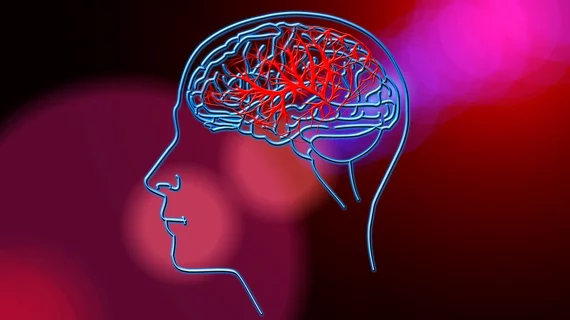Stroke patients with AFib face a higher mortality risk after thrombectomy
Stroke patients treated with mechanical thrombectomy (MT) face a significantly higher risk of 90-day mortality if they present with atrial fibrillation (AFib), according to a new meta-analysis published in JAMA Network Open. [1]
The study's authors performed a systematic review of 10 different studies representing 6,543 acute ischemic stroke (AIS) patients—both with and without AFib—who were treated with MT.
Compared to AIS patients without AFib, the study found that AIS patients with AFib had a 90-day mortality odds ratio of 1.47 after undergoing MT.
Similar MT procedural outcomes for patients with AFib
While their mortality rates diverged widely, patients with and without AFib did have similar procedural outcomes in terms of post-MT disability levels, represented by similar rates of functional independence and similar reperfusion rates.
“The worse functional outcomes and higher rates of mortality observed in patients with AF is interesting because the procedural outcomes were comparable between groups. Thus, the worse outcomes in patients with AF cannot be attributed to technical success rates,” the authors wrote.
Rates of symptomatic intracranial hemorrhage were also similar between groups.
Higher mortality could be a result of comorbidities and advanced age
What led to the higher mortality rates for stroke patients with AFib, then, could come down to the fact that these patients have higher rates of known comorbidities. The authors noted that patients in their analysis with AFib also presented with higher rates of hypertension and diabetes.
Age also appears to be a relevant factor in the study’s finding of higher mortality rates for stroke patients with AFib after undergoing MT. Patients with AFib tend to be older in general, the authors noted, and this proved true in the study participants as well: The patients with AFib included in the study were, on average, 10.17 years older than those without it.
Together, the higher rate of comorbidities along with more advanced age could explain much of the difference in mortality rate, the authors suggested.
“We hypothesize that the worse outcomes seen in patients with AF was because these patients were typically less healthy than their counterparts without AF,” they wrote.
Implications for treatment of stroke patients with AFib
While previous studies have examined the relationships between AFib and MT outcomes, the authors note that these studies were much smaller than their new meta-analysis.
With AFib accounting for more than 15% of all strokes in the U.S., better understanding of how the condition affects outcomes can have key implications for practitioners as they make decisions about the best path forward for clinical treatment. [2]
